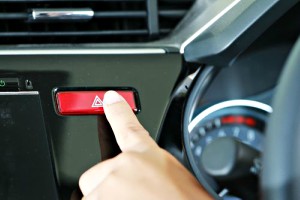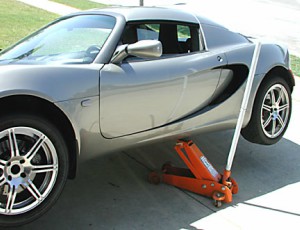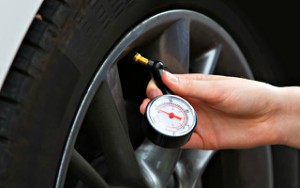Before we begin telling you how to change a tyre, it is essential that you have already made your way to a safe location and are in a calm state – your safety is our number one priority!
We know experiencing a tyre blowout can be a distressing situation, so if you feel you need assistance, you can call our breakdown provider RescueMyCar on 01423 535795 or become a member today.
If you feel confident enough to change the wheel – we’ve got the best news, your spare wheel is the most reliable way to ensure you’re back on the road again. Your car will come equipped with either a narrow space-saver or a full-size spare; the process will still be the same when changing it.
If you feel confident enough to change the wheel – we’ve got the best news, your spare wheel is the most reliable way to ensure you’re back on the road again. Your car will come equipped with either a narrow space-saver or a full-size spare; the process will still be the same when changing it.
 So, read below to learn how to change a tyre.
So, read below to learn how to change a tyre.What should I do to prepare? As mentioned earlier, we recommend that you park in a safe area and leave your hazard lights on. Put on your reflective jacket, if you have one, and position your warning triangle to alert oncoming drivers.
What equipment do I need? The key things you need when changing a tyre are to have are a wrench (to remove the wheel nuts), a jack (for lifting the car off the ground), wheel chock or bricks (to stop the car from rolling when jacked up), wheel nut key (if locking nuts are fitted) and your car handbook (this is for reference).
However, it is also useful to have a torch (if you do breakdown during the night), gloves (if you don’t want to get your hands dirty), a reflective jacket and warning triangle (to ensure you’re visible to other drivers, a short plank of wood). Use this as a flat surface to steady the jack and finally a tyre pressure gauge, which is to check the new tyre(s) is fully inflated.
10 steps to change the tyre
1. Prepare the car
- Apply the handbrake and if you are not alone – take all passengers out of the car.
- Equip yourself with your spare tyres and the necessary tools to begin changing the tyre.
2. Position the wheel chocks
- Position the chock on the opposite wheel to the one with a puncture.
3. Loosen the wheel nuts
- Turn the wheel wrench anti-clockwise and loosen the nuts to the point where they can be turned by hand; these may be tough to loosen.
- Don’t remove these completely yet.
10 steps to change the tyre
1. Prepare the car
- Apply the handbrake and if you are not alone – take all passengers out of the car.
- Equip yourself with your spare tyres and the necessary tools to begin changing the tyre.
2. Position the wheel chocks
- Position the chock on the opposite wheel to the one with a puncture.
3. Loosen the wheel nuts
- Turn the wheel wrench anti-clockwise and loosen the nuts to the point where they can be turned by hand; these may be tough to loosen.
- Don’t remove these completely yet.
 4. Jack the car up
4. Jack the car up- Not all cars have the same jacking point, therefore you’ll need to look in your handbook to see where these are.
- You need to aim to position the jack at the side of the car, so it is close to the punctured wheel.
- To make this step easier, we recommend using a short plank of wood underneath the jack. This will keep it stable.
5. Remove the flat tyre
- Now it is time to fully loosen the wheel nuts.
- Make sure you carefully pull the tyre towards you until it comes free.
- Place it flat on the ground.
- Raise the car until its 10-15cm off the ground.
6. Mount the spare wheel
- You must slide the spare wheel onto either the protruding hub bolts or in line with the wheel nut slots.
- Replace the wheel nuts and tighten them by hand.
7. Lower the car and tighten the bolts
- Using the jack again, drop the car down enough to make sure the spare tyre is in contact with the ground.
- Using the wrench, tighten the wheel nuts.
8. Fully lower the car
- Now you can bring the car fully down and remove the jack.
- Take into consideration the tightness of the wheel nuts and give them a final check before setting off on the road.
- Put the jack and the other tyre in the boot, and tidy away the rest of the equipment.
- You must slide the spare wheel onto either the protruding hub bolts or in line with the wheel nut slots.
- Replace the wheel nuts and tighten them by hand.
7. Lower the car and tighten the bolts
- Using the jack again, drop the car down enough to make sure the spare tyre is in contact with the ground.
- Using the wrench, tighten the wheel nuts.
8. Fully lower the car
- Now you can bring the car fully down and remove the jack.
- Take into consideration the tightness of the wheel nuts and give them a final check before setting off on the road.
- Put the jack and the other tyre in the boot, and tidy away the rest of the equipment.
 9. Check the spare tyre pressure
9. Check the spare tyre pressure- Use a tyre gauge to check the spare wheel is fully inflated.
- The alternative option is travelling to the nearest petrol station/garage and use a gauge there.
- If it does need inflating, make sure you pump up the tyre to the recommended pressure (this can be found in your car handbook).
10. Take your punctured tyre for repair
- Visit a garage as soon as possible to let them look at your punctured tyre. They will give you guidance as to whether they can repair it.
- If the tyre cannot be repaired, you need to replace it.
So, now you should know how to change a tyre.
To conclude, tyre safety is very important. If you know that you are going to be driving for a long period of time, check your tyre pressures; although these should be checked every fortnight.
Find more CarCliq guides here
Don’t have a spare wheel? Click here
Need guidance on what type of tyre to buy? Click here
To conclude, tyre safety is very important. If you know that you are going to be driving for a long period of time, check your tyre pressures; although these should be checked every fortnight.
Find more CarCliq guides here
Don’t have a spare wheel? Click here
Need guidance on what type of tyre to buy? Click here